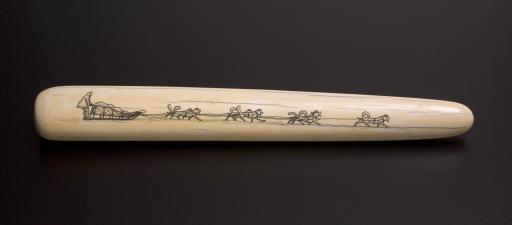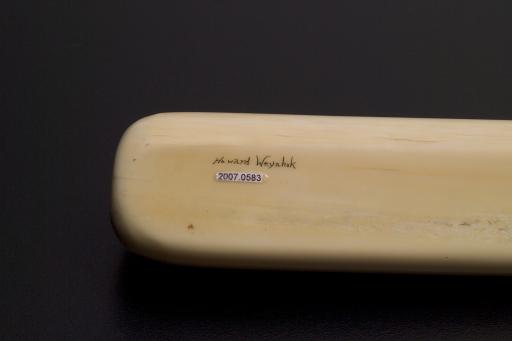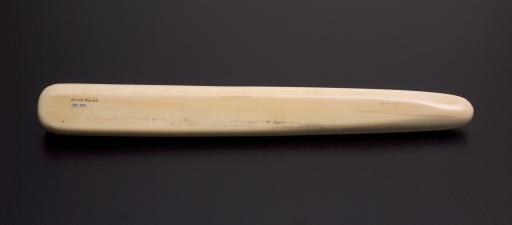walrus tusk depicting a dog team and sled, Howard Weyahok
Artwork Overview
walrus tusk depicting a dog team and sled,
late 1800s–1941
Where object was made: Juneau, District of Alaska or Alaska Territory (present-day Alaska), United States
Material/technique: walrus tusk; ink; incising
Dimensions:
Object Length/Width (Length x Width): 36 x 4.5 cm
Object Height/Width (Height x Width): 14 3/16 x 1 3/4 in
Object Length/Width (Length x Width): 36 x 4.5 cm
Object Height/Width (Height x Width): 14 3/16 x 1 3/4 in
Credit line: Gift of Francis Edward Mahon
Accession number: 2007.0583
Not on display
If you wish to reproduce this image, please submit an image request



